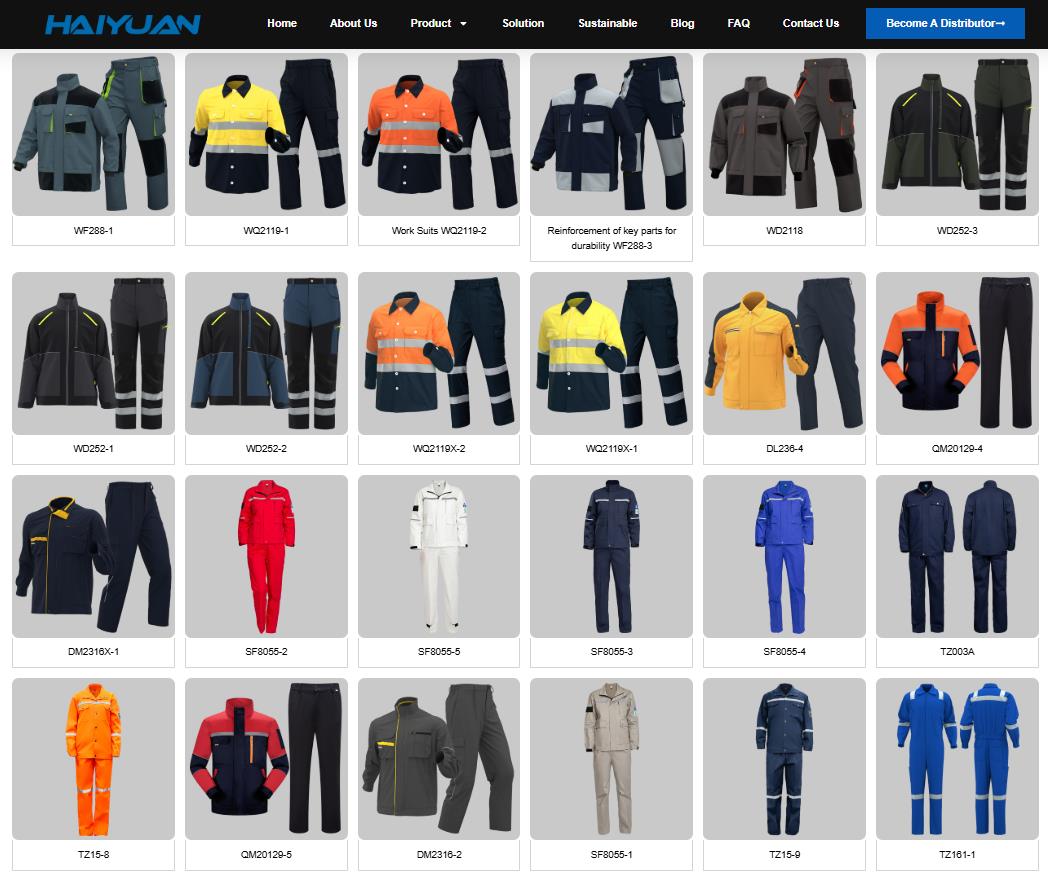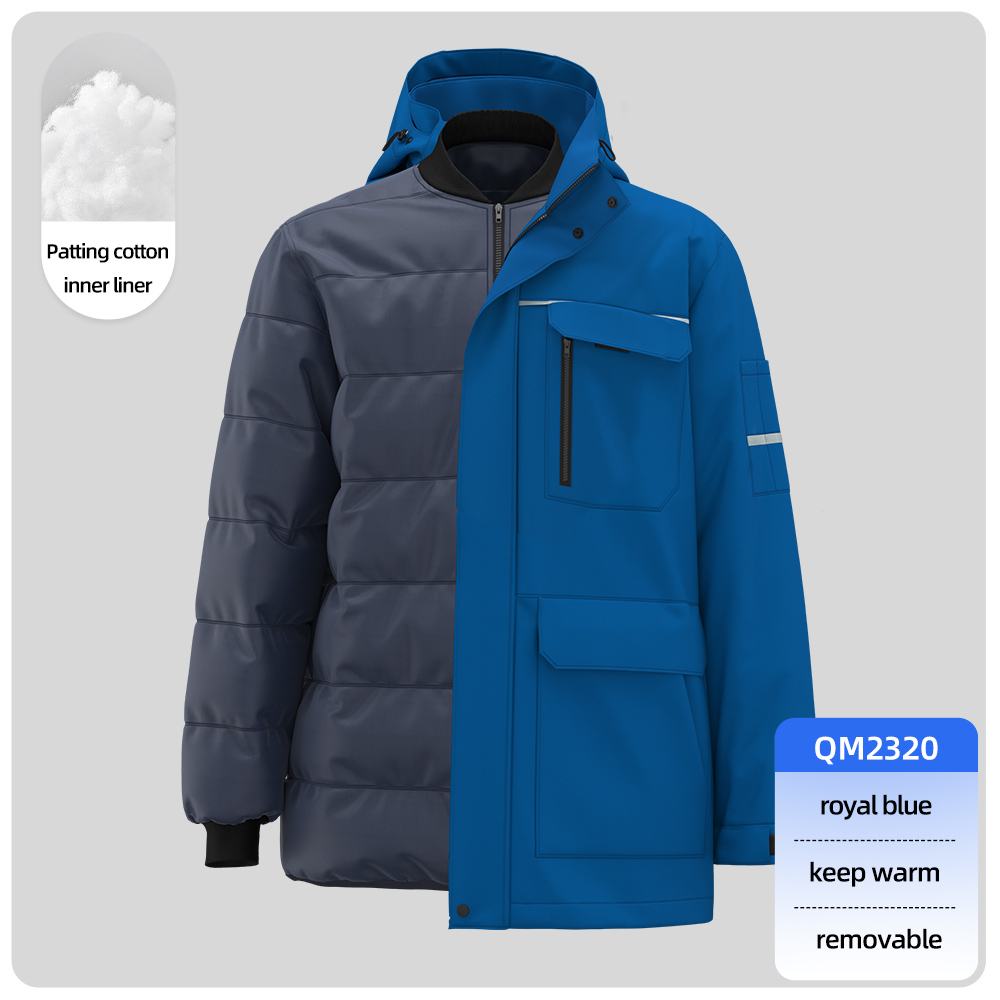Building on our previous discussions about workwear in general and specific types like Type 5, here is a detailed look at protective work clothing.
Protective work clothing is a specialized category of garments and equipment designed specifically to shield the wearer from short- and long-term hazards in the workplace. Unlike general workwear, which focuses on durability and utility, the primary function of protective workwear is safety and risk mitigation.
Its core purpose is to create a barrier between the worker and potential dangers, preventing injury, illness, or contamination.
Key Difference: Workwear vs. Protective Work Clothing
-
Standard Workwear (e.g., hyys pants, Haiyuan shirt, jacket): Prioritizes durability and functionality for general labor. It protects against wear and tear and provides pockets for tools.
-
Protective Work Clothing (e.g., Arc-Flash Suit, Chemical Coverall): Prioritizes safety from specific hazards. It is often certified to strict standards and is considered Personal Protective Equipment (PPE).
Common Hazards and Corresponding Protective Clothing
Protective clothing is categorized by the type of hazard it defends against. Here are the most common types:

| Hazard Category | Examples of Hazards | Typical Protective Clothing |
|---|---|---|
| Chemical & Biological | Acids, solvents, pesticides, bloodborne pathogens | Chemical-resistant coveralls, aprons, and suits (often made of Tyvek, PVC, Neoprene). Can be rated as Type 1-6 (as we saw with Type 5 for particles). |
| Thermal & Fire | Extreme heat, flames, molten metal splashes, arc flashes | FR (Flame-Resistant) clothing, aluminized proximity suits for firefighters, arc-flash rated suits for electricians. |
| Mechanical & Physical | Cuts, abrasions, impacts, sharp objects | Cut-resistant sleeves and gloves, chainmail aprons for butchers, padded clothing for loggers. |
| Particulates & Dust | Asbestos, silica dust, wood dust, pharmaceutical powders | Dust-proof coveralls (like the Type 5 clothing we discussed). |
| Extreme Weather | Heavy rain, snow, wind, sun | High-visibility waterproof jackets and pants, insulated coveralls, UV-protective clothing. |
| Visibility | Low-light conditions, traffic, heavy machinery | High-Visibility (Hi-Vis) clothing with fluorescent background and reflective tape (e.g., ANSI/ISEA 107 standard). |
| Radioactivity | Radioactive particles and contamination | Anti-contamination clothing (Anti-C’s), which is often disposable and used to prevent the spread of radioactive dust. |
Key Features and Standards
What defines high-quality protective work clothing?
-
Material & Construction: Fabrics are chosen for their specific protective properties (e.g., Nomex for fire resistance, Kevlar for cut resistance, Tyvek for particulate barrier). Seams are often sealed to prevent penetration.
-
Certification & Standards: This is crucial. Protective clothing must meet rigorous performance standards set by organizations like:
-
EU: CE marking, with specific EN standards (e.g., EN 14126 for biological agents, EN 1149 for anti-static).
-
USA: ANSI/ISEA standards, NFPA standards (e.g., NFPA 2112 for flash fire), and ASTM standards.
-
-
Design for Safety & Function:
-
Closures: Snaps, zippers, and flaps designed to keep hazards out.
-
Fit: Designed to allow for a full range of motion without compromising the protective barrier (e.g., gusseted underarms, articulated knees).
-
Compatibility: Designed to work with other PPE, such as respirators, safety glasses, and gloves.
-
Why It’s Mandatory
The use of protective work clothing is not a suggestion; it’s often a legal requirement governed by occupational health and safety regulations (like OSHA in the U.S. or the Health and Safety at Work Act in the UK). Employers are legally obligated to conduct a risk assessment and provide the appropriate PPE, including protective clothing, at no cost to the worker.
In summary, protective work clothing is engineered Personal Protective Equipment (PPE) designed to create a critical barrier against life-threatening or health-impairing workplace hazards. Its selection is based on a scientific assessment of risk and must comply with strict international safety standards.
For some insightful reads, we’ve curated a list of recommended articles just for you:
- How do I find a product manufacturer in China?
- How to find cheap manufacturers in China? A guide to avoid pitfalls
- How to complete your first purchase of workwear in China safely and efficiently
- Custom uniforms for Small business
- Choosing the Best Industrial Work Suit
- Ultimate Guide: Best Wholesale Work Clothes in China
- Cut & Sew Customization
- Logo Customize Clonthing Manufacturer
- The Ultimate Guide to Finding Reliable Wholesale Work Clothes Factories in China
- Importing Clothes from China Guide
Can’t find what you’re looking for? Feel free to contact us. We’re here to help 24/7.




